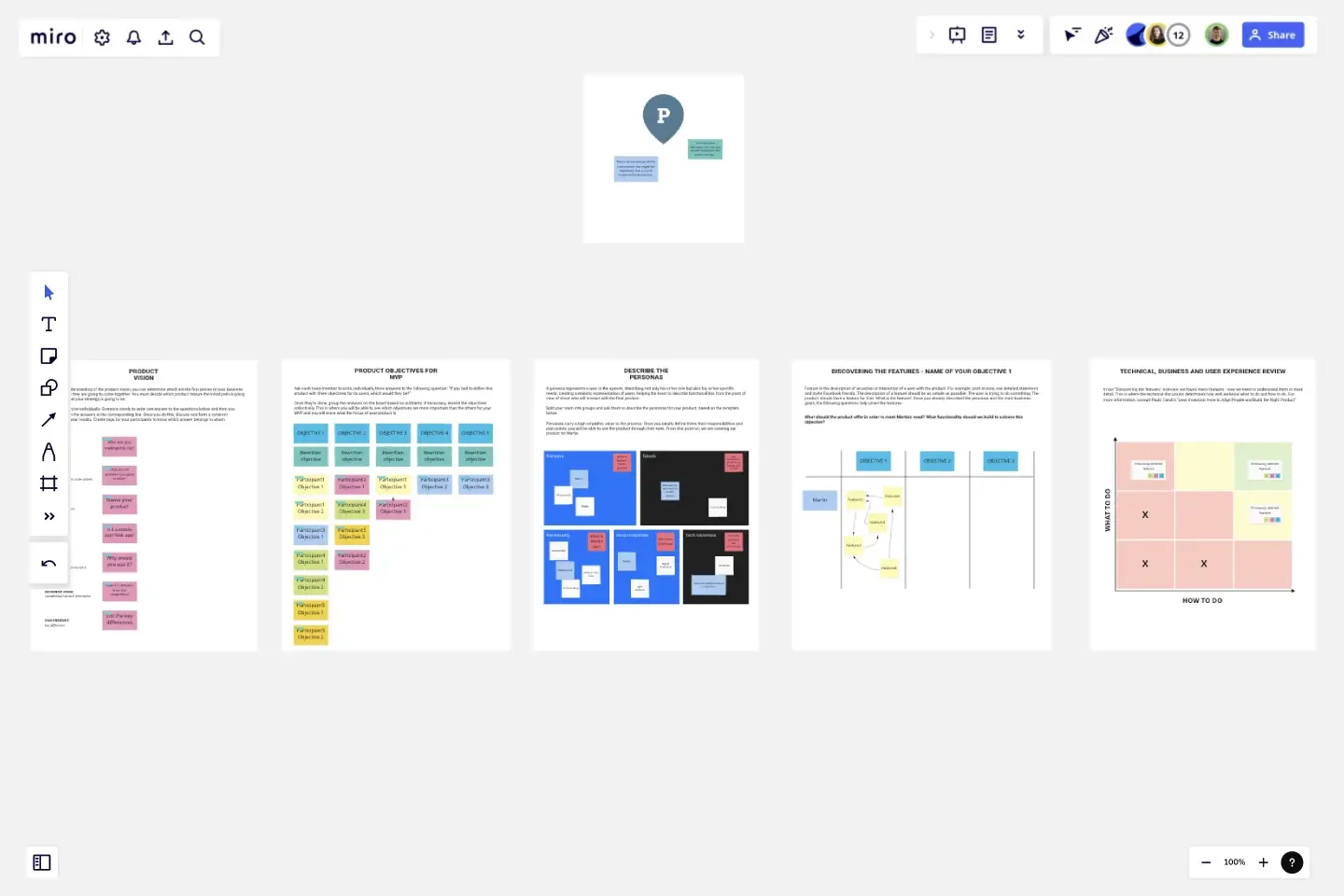Lean Inception
The Lean Inception method gives you a great place to start from - defining and developing an MVP.
Why use Lean Inception?
When we go into our workshops, we’re often faced with very little information and several stakeholders with different priorities and ideas about what needs to be done. It’s not possible to immediately make everyone happy, so our process helps us create a constructive dialogue between members of the same team who come into the workshop with different needs.
Through compromise and facilitated discussions, it gives us all a common goal to work towards and levels out everyone's expectations. This board is our interpretation of the Lean Inception approach and represents our learned experiences so far. We use it as a base and continue to modify it based on each workshop's needs. It helps us define the problem in the best possible way and get to a clearly defined MVP.
How is Lean Inception different from a Design Sprint?
We were interested in the problem-solving approach in the Design Sprint and the Lean Inception. The methodology was based on so much real experience from their creators that we wanted to give it a shot.
The Design Sprint method solves a different kind of issue than the Lean Inception one. The questions are different, as is the end result. As we went through them, we realized that the demands coming from our clients wouldn’t really fit either method - but a combination of both worked like a charm. Sometimes we also need to adapt the length of the workshop. We don't always have the 5 days both methodologies ask for - so we make it work in 3 days by cutting some of the activities. It's a bit more intense but works well both for our clients and us.
For example, we normally don't need to calculate the effort, time and cost - we try to go into the workshop with a ballpark figure regarding these estimates. However, this is an individual approach that works well for us, as we are in charge of both facilitating and developing the MVP in question.
The Lean Inception method gives you a great place to start from - defining and developing an MVP. This was most of what we needed to do. But in the end, it leaves you without a visual idea of what needs to be done. We feel that the visual representation of the problem being solved is like the cherry on top of a well defined MVP. That is where you can see that everyone is on the same page and you all understand the MVP properly. So we borrow the sketching part of the Design Sprint and incorporate it into our approach.
This template was created by RUBICON.
Get started with this template right now.
Miro Basics: Guide for New Participants
Works best for:
Agile
The Miro Basics: Guide for New Participants template offers a comprehensive overview of essential Miro functionalities and best practices for new users. It provides step-by-step instructions, tips, and examples to help participants navigate the Miro platform confidently and effectively. This template empowers new users to leverage Miro's collaborative features and unleash their creativity in visual collaboration. By promoting proficiency and engagement, the Miro Basics: Guide for New Participants enhances collaboration and productivity across teams.
All-in-one PI Planning
Works best for:
Agile
The All-in-one PI Planning template streamlines the SAFe Program Increment (PI) Planning process by providing a comprehensive framework for teams to collaboratively plan and align on objectives and dependencies. It integrates essential elements such as PI Objectives, Team Breakouts, and Program Board, enabling teams to visualize, prioritize, and coordinate work effectively. This template empowers Agile Release Trains to deliver value predictably and efficiently, driving alignment and synchronization across the organization.
Canvas Playground Template
Works best for:
Templates
The canvas playground template is the ultimate way to explore all the features that make up Miro's Intelligent Canvas. This dynamic and interactive space is designed to help you get work done faster while engaging your team. From AI creation and Sidekicks to intelligent widgets, this template allows you to try it all and discover how these capabilities can streamline your workflow and enhance collaboration.
Team´s High Performance Tree
Works best for:
Agile, Meetings, Workshops
The Team's High Performance Tree is a visual representation of the factors influencing team performance. It provides a structured framework for identifying strengths, weaknesses, and areas for improvement. By visualizing factors such as communication, collaboration, and leadership, this template enables teams to assess their performance and develop strategies for enhancement, empowering them to achieve peak performance and deliver exceptional results.
I Like | I Wish | I Wonder
Works best for:
Agile
Feedback is a key part of any project development and crucial to the iterative process.
Kanban Framework Template
Works best for:
Kanban Boards, Agile Methodology, Agile Workflows
Optimized processes, improved flow, and increased value for your customers — that’s what the Kanban method can help you achieve. Based on a set of lean principles and practices (and created in the 1950s by a Toyota Automotive employee), Kanban helps your team reduce waste, address numerous other issues, and collaborate on fixing them together. You can use our simple Kanban template to both closely monitor the progress of all work and to display work to yourself and cross-functional partners, so that the behind-the-scenes nature of software is revealed.
